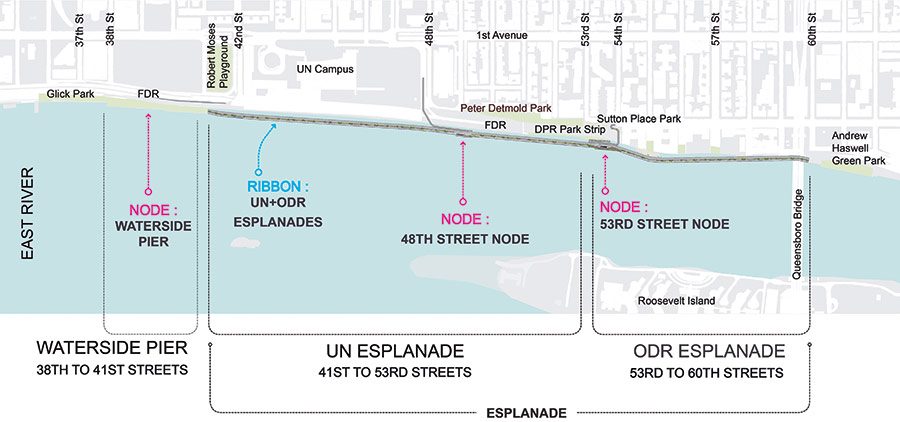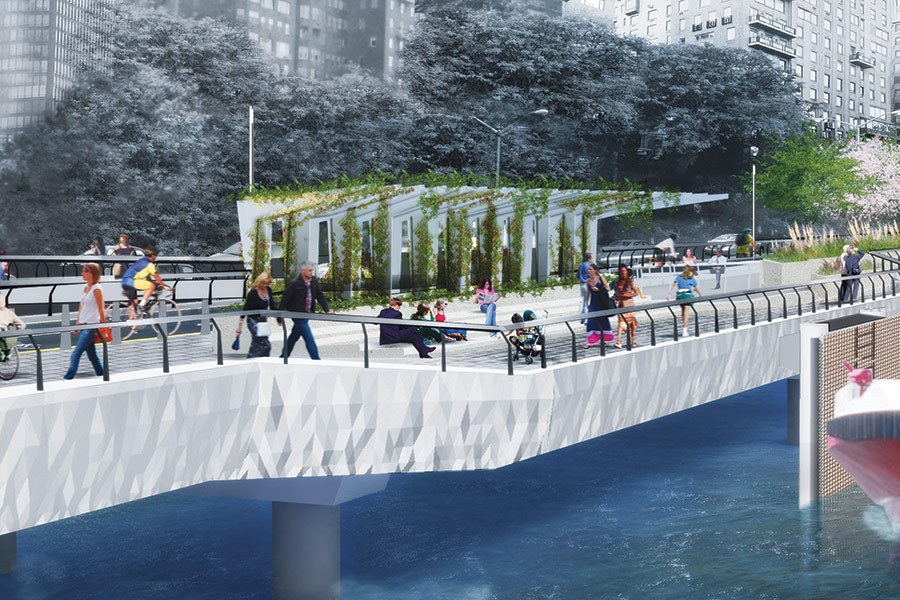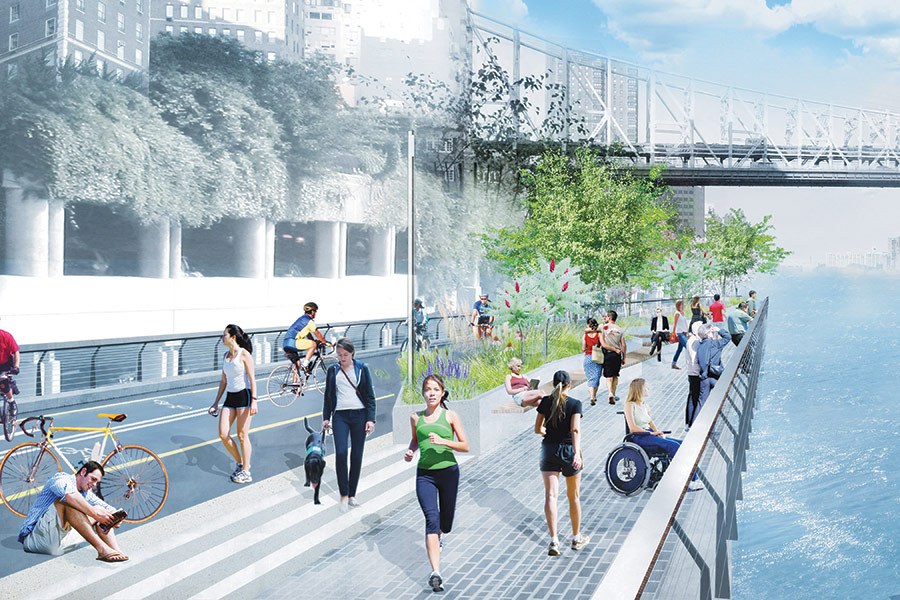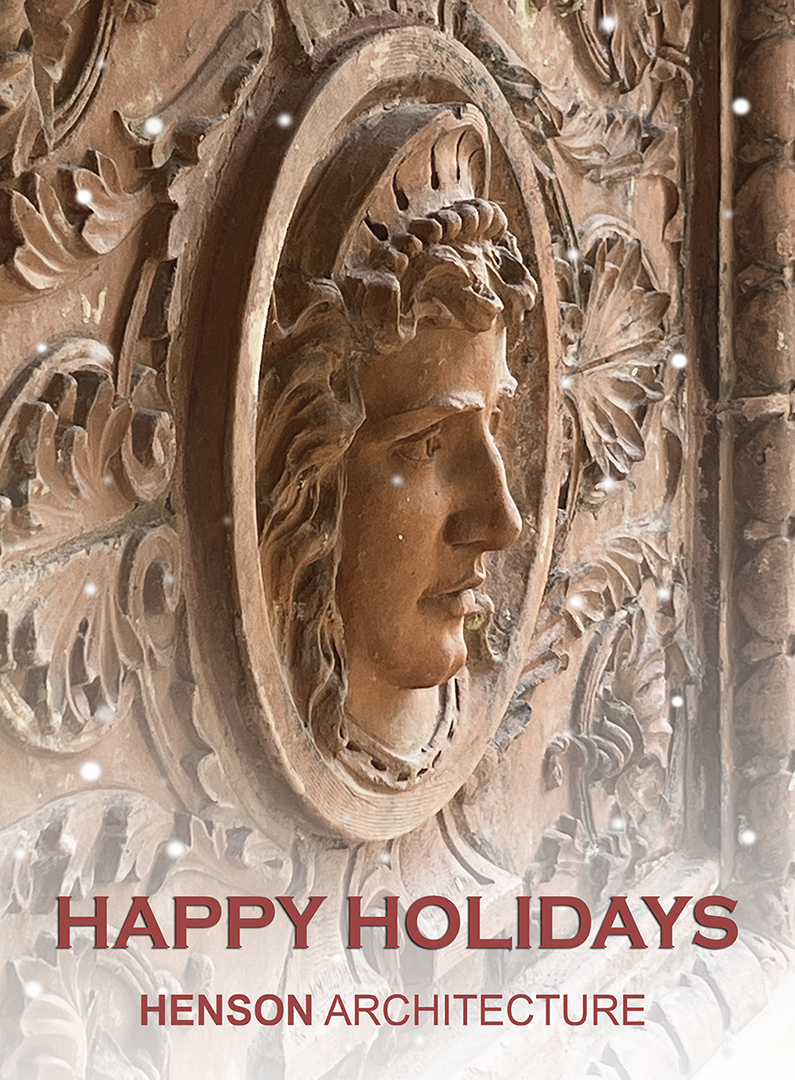Annie Bergelin reports for The Architect’s Newspaper: The Missing Link. AECOM designing new path to connect New York City’s East River Esplanade.

For years there has been an inconvenient gap in the East River Esplanade between East 37th and East 60th streets, disrupting what could be a contiguous promenade experience along the waterfront. The gap is there because of two major built projects that cause the north section to be disjointed from the south section. The first is FDR Drive, the brainchild of Robert Moses who gave preferential treatment to vehicular traffic along the East River.
The second is the United Nations headquarters, an iconic Modernist building complex that trumps local land use in the interest of global alliances. Despite these two obstacles, AECOM has come up with a solution to bridge the gap on the East River Esplanade. The conceptual design work that AECOM has prepared for the New York City Economic Development Corporation (EDC) reveals that there will be a new piece of infrastructure dedicated to pedestrian and bicycle circulation decking over the water adjacent to the FDR Drive. The primary objective is to connect the north and south portions of the Esplanade, but the design team is using the opportunity to introduce other amenities as well.
 |
 |
 |
Gonzalo Cruz, a creative design director at AECOM and project manager for the Esplanade project, explained that the design seeks to develop easily accessible connections to the street grid, provide three programmatic nodes, and establish a “ribbon” of features to integrate the mile-long project as one cohesive design. Between 38th and 41st streets there is a recreation node designed for active uses such as children’s play areas and fitness equipment. At 48th Street there is a gathering node for passive recreation with an amphitheater seating area, shade trees, and a variety of seating options, including a bar area with benches and small gathering spaces. And at 53rd Street there is an environmental education node with educational signage and ecological plantings.

Cruz pointed out that an increasing number of people want to ride bicycles in New York, either for recreation or commuting, therefore the city needs to build the infrastructure to facilitate that objective. The expanded esplanade will feature a bike lane separated from the pedestrian walkway to streamline north-south movement along the East Side of Manhattan.
 |
 |
Developing ideas for the project has been a true collaborative effort, said Cruz. AECOM worked with various city agencies and community groups to determine how to deal with access, programming, and logistics. Internally, AECOM brought together their landscape design and planning team with the environmental design and marine engineering teams to solve the complex design problem. The goal is to design a project that benefits the local community, as well as the city at large, and Cruz believes that they have been successful thus far with the conceptual design.
Cali Williams, vice president of EDC, agrees. “We’re proud of the open engagement process that sought and subsequently applied the best ideas from both the design team and local community to achieve the highest standards of form and function,” said Williams. There is no set timeline to develop the project yet, but planning is underway. For those of us who long for the landscape-oriented transformation of the New York City waterfront, this project cannot come soon enough.




